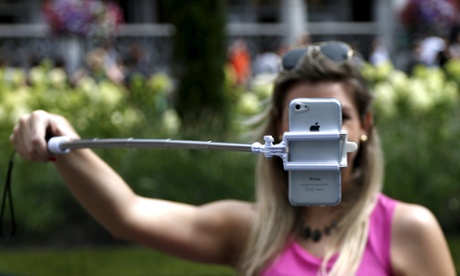
It is just over 100 years since Sigmund Freud’s polemical claim that narcissism is not only a normal, but also an ubiquitous, personality trait. “Loving oneself,” he argued, is the “libidinal complement to the egoism of the instinct of self-preservation”. In other words, we have evolved as selfish animals because our self-love is part of our adaptive survival toolkit. The survival of the fittest is also the survival of the self-obsessed, and in the age of modern celebrity, who needs science to evaluate Freud’s now not-so-controversial claim?
However, Freud also noted that when narcissism levels are too high, they turn into a liability, hindering our capacity to love or feel empathy for others, and crippling our ability to get along with people. As even radical Darwinians know, who cares if the final motive is to (selfishly) pass on our genes, if we need to (altruistically) cooperate with others to be able to achieve that?
Indeed, even in today’s world of technologically enhanced reproduction, it is still necessary to find a partner when it comes to passing on our genes. Our offspring will enjoy better opportunities if we have a strong social support network, which requires caring for others so they can care for us. Thus, while a little narcissism may be advantageous, too much of it is pathological and dysfunctional. And if this is true and problematic at the individual level, it has much more severe consequences at the collective or group level: a society of self-centred, antisocial people will generally be outperformed by more cooperative, prosocial and altruistic societies. Unlike in the 1980s, everybody – except perhaps Donald Trump voters – knows this now.
This begs the question of whether the advent of recent technologies, such as smartphones and social media, may be enhancing our inherent narcissistic tendencies beyond a healthy level, and to the detriment of wider society. Consider the case of the selfie stick, named by Time magazine as one of the best inventions of 2014, declared a “must-have” holiday gadget by Business Insider, and heavily regulated in South Korea, where the fine for unregistered users can exceed £17,000. There is already a National Selfie Gallery and, as Jerry Saltz noted in a thoughtful New York magazine article last year, “Selfies have changed [our] social interaction, body language, self-awareness, privacy, and humor, altering temporality, irony, and public behavior.”
Unsurprisingly, plenty of ironic guides have been published on how not to die while taking a selfie; these include not being near dangerous animals, in the middle of a natural disaster, or on top of a high-speed train. Yet selfie stick users must surely be reminded that they are living in the physical world. Contrary to what their duckfaces suggest, those around them are living human beings and their existence matters. In fact, they may be the only people in the world who are paying attention to their selfies, and, unlike their virtual fanbase, they do exist beyond the confines of their imagination. In addition, they may benefit from being told that smartphones and selfie sticks confer as much fame as a mirror.
Unsurprisingly, scientific evidence indicates that social media activity is higher in narcissists, and narcissists tend to post more self-referential content, including pictures. Research has found that although women take more selfies than men, selfie activity is indicative of narcissism in men but not women. In another study, men who post selfies were also found to be more exploitative and entitled. This is in line with recent scientific reviews showing that men tend to be more narcissistic than women. In addition, selfies focused on people’s own physical appearance have been linked to vulnerable narcissism, a neurotic or insecure form of narcissism characterised by more fragile self-esteem levels and the constant need to be reassured and liked by others. I recently saw some of my early adopter friends post drone selfies on social media. This seems like the obvious progression in the evolution of the selfie - early adopters tend to be more narcissistic. Perhaps after that we can expect a Google satellite app that enables 24/7 selfies and automatically edits and shares them on Instagram?
Of course, there is no clear sense of the direction of causality in this relationship. Are selfie sticks just appealing to narcissists, or might they actually be enhancing people’s narcissism? We don’t know yet. But most human habits are the product of reciprocal effects between dispositions and environmental experiences, suggesting that narcissistic people may indeed be more vulnerable to the selfie syndrome, and that succumbing to it would in turn make people more narcissistic. Furthermore, absence of evidence does not imply evidence of absence, so there are arguably reasons to be cautious before we endorse or celebrate activities that may harm an entire generation in the long run: this is the argument made by those who equate our digital addictions to the early days of smoking, when people puffed away happily without awareness of the consequences.
In any event, psychological manifestations of auto-eroticism (to use another Freudian term for narcissism) are as distasteful in public as their physical equivalent, so why should any cultured society tolerate the public masturbation of self-image?
Tomas Chamorro-Premuzic is professor of business psychology at University College London, visiting professor at Columbia University and the CEO of Hogan Assessment Systems. He is co-founder of metaprofiling.com and author of Confidence: The Surprising Truth About How Much You Need and How to Get It.
To get weekly news analysis, job alerts and event notifications direct to your inbox, sign up free for Media & Tech Network membership.
All Guardian Media & Tech Network content is editorially independent except for pieces labelled “Brought to you by” – find out more here.

